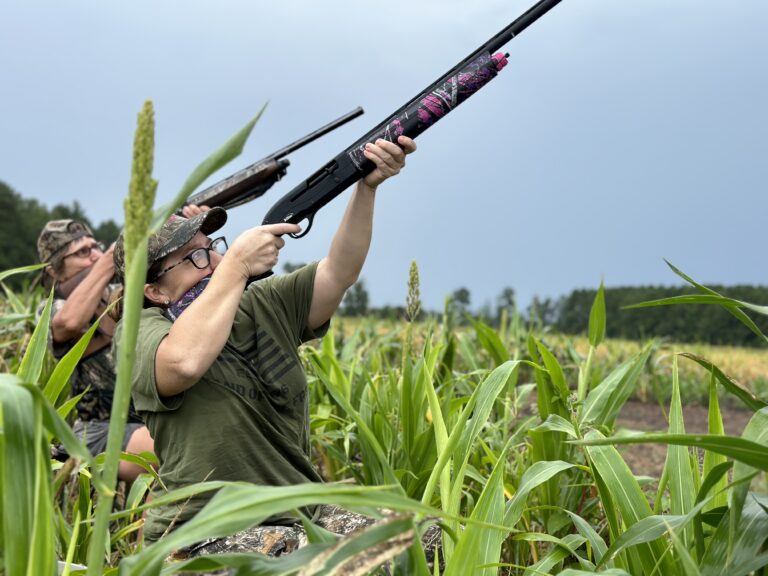
“If you are struggling at hitting feathered birds, just go shoot a whole bunch of clays at the course to fix it.” I hear this A LOT. This is a common piece of advice from one shooter to another but it is far from “sage”advice.
While there is some good that will come out of getting to the course more for practice, you have to make sure that your practice is not impeded with bad habits. This also applies to those that primarily hunt but struggle to connect with a clay pigeon. Sporting clay presentations do mimmic bird flights but it’s not the same as actually shooting real birds. In this installment we break it down and help to get you on the right flight path.
There are countless pics in my cell phone of students and clients never getting their cheek on the stock in a hunt. I never try to take these mementos of poor form they just appear. I’m usually trying to capture a unique moment when I can see the shooter with the bird just ahead of them. Invariably, it’s a miss or requires a backup shot and the camera don’t lie! There it is, the glaring mistake. They never got their cheek down on the stock.
I always hear the same story when this happens about how great a shot they are on the course. They are a higher level competitive shooter but can’t connect on a chukar. Why? Well, shooting feathers is very different from clays as you don’t have the ability to set up a pre-shot plan and if you miss, there’s no “let me see that bird again” option. So what’s the problem? The shooter is excited and in too bid of a hurry. This causes the barrel to go blazing out of control and the shooter forgets everything they ever did in the box in an effort to hurry up and drop the bird. That’s it. That’s normally all it is and it’s easy to fix.
Slow down, lean into your shot and look hard at the bird. It’s ok to get excited. I always tell people on the hunt that if you don’t excited, why do it? But, you’ve got to be able to harness that excitement and direct it. When it comes to getting better at shooting feathers, more is better. You are almost trying to desensitize yourself to it so that you can truly concentrate visually and not allow the excitement to ruin your success. Be sure your gun fits, you have a great stance and get used to seeing those feathers fly. Mike and I run the dogs in UFTA and NUCS. We will shoot about 500 birds through the summer to keep in practice. There are others that will shoot 1000s each year to stay tuned up for field trials. They don’t ever miss, especially when it really counts.
So what about when these seasoned hunters can’t hit a clay pigeon sitting on the ground 10ft in front of them?! Well, that’s basically the same problem but in reverse of the seasoned clay shooter. The hunter is used to Churchill shooting (instinctual) and they tend to only shoot upland, it’s mostly just trap shots. The waterfowlers and dove hunters tend to be much more well rounded in their clay shooting.
Churchill is deadly up to about 25yds and then it falls apart, especially on a crossing bird at distance. Since the hunter has spent most of their shooting career reacting, they have never had to plan out a shot. They don’t particularly understand hold points and break points and how to judge when you do and don’t need to add lead. Now, couple that with having to hit the same pair of birds 3 times in row and you’ve got one tormented shooter.
The hunter needs to spend time in the box learning how to target read. Understanding what to do with a close bird quartering in and how to respond correctly to a chandelle out at 50yds softly falling to the right. Most importantly, they need to add more tools to their toolbox. They need to understand that Churchill is just fine for those closer flushing birds but pull away, swing through and straight-line intercept all have very practical applications dependent on the presentation.
Whether you mostly chase feathers or you love crushing clays, be sure that you’re ready to pivot. It only takes a few sessions practicing and understanding why they are each uniquely different. As always, I’m happy to assist in sorting them out for you to give you the solid fundamentals to success.
Leave a Reply
You must be logged in to post a comment.